Are you navigating the complexities of employment contract amendments? It's crucial to approach such changes with clarity and professionalism to ensure all parties are on the same page. Whether you're an employer looking to update terms or an employee seeking better conditions, understanding the essential components of an amendment letter can make all the difference. Dive into our article to explore a handy template and tips for crafting your own!

Clear Identification of Parties
The clear identification of parties in an employment contract amendment is crucial for legal clarity and to ensure that all involved parties understand their roles and responsibilities. The parties typically consist of the employer, which can be a corporation or individual, including specific details like the company name, registration number, and principal place of business, and the employee, whose full legal name, address, and position within the company must be accurately stated. Additionally, including any relevant identification numbers, such as Social Security Number or employee ID, can further reinforce clarity. This precise identification serves as a foundation for the amendment, reducing potential misunderstandings and ensuring both parties are aligned on any alterations made to the original employment agreement.
Specific Terms to be Amended
An employment contract amendment outlines changes to the existing agreement between employer and employee. It specifies updated terms, including adjustments to job responsibilities, salary amounts, work hours, or benefits packages. Clear identification of the parties involved (employer name and employee name) is essential for legal validity. Noteworthy dates, such as the effective date of amendments and original contract date, provide a timeline for the changes. Including a section for both parties to sign ensures mutual agreement and acknowledgment. This document should be concise, maintaining clarity and professionalism to prevent misunderstandings.
Reason for Amendment
An employment contract amendment regarding a change in job responsibilities is often necessary when shifts in company goals or employee capabilities occur. Employees could face adjustments in their roles due to company restructuring, such as a merger or acquisition involving two significant organizations, thereby necessitating an update to align with new operational demands. Additionally, performance evaluations may highlight the need for additional responsibilities, promoting career development and growth opportunities for the employee. Compensation adjustments tied to these modified roles may also require documentation to reflect new salary structures or bonuses. Clear communication of any changes is crucial for maintaining transparency and trust between the employer and employee.
Effective Date
Amending an employment contract requires clarity and attention to detail. The effective date, a critical element in contract amendments, marks the moment changes take place. For example, if an employment contract amendment specifies a new salary or updated job responsibilities, the effective date--often a singular date, such as January 1, 2024--determines when these changes come into force. This date ensures both parties, the employer and the employee, understand when the updated terms will be implemented, avoiding confusion regarding pay periods, benefits eligibility, or job duties. Clear communication regarding the effective date helps establish mutual agreement and transparency, fostering a positive working relationship.
Signatures and Consent
Employment contract amendments often require formal documentation for legality. Key elements include signatures from both parties involved, which signify agreement and consent to the modifications proposed. The presence of a witness may also be necessary to validate the changes, especially in jurisdictions where such measures are mandated by law. Essential details encompass the date when the amendments take effect, specific sections of the original contract that are altered, and any additional clauses introduced. Proper formatting, in line with local labor regulations, is crucial to ensure enforceability.

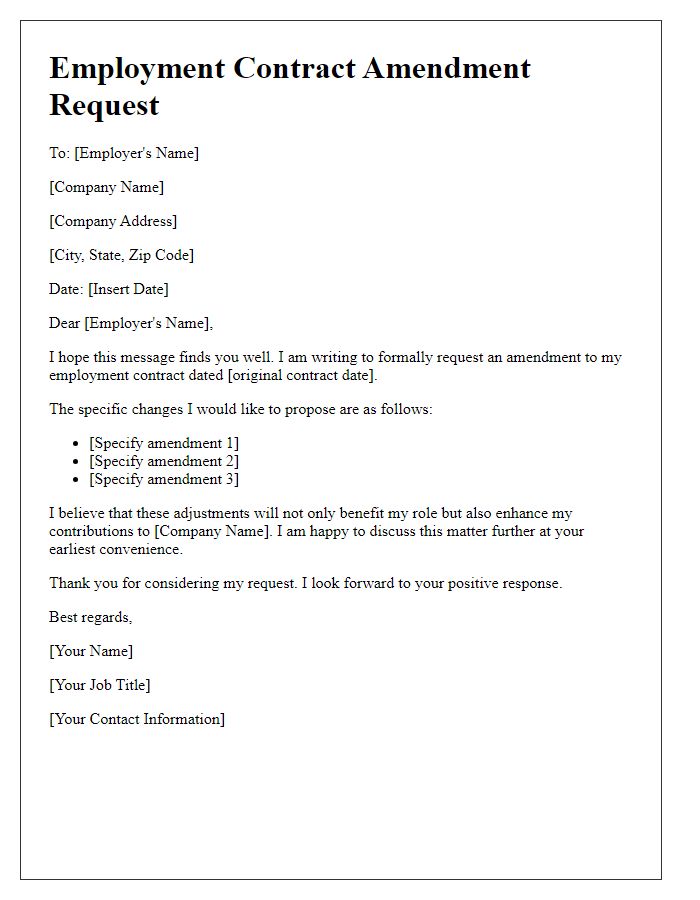
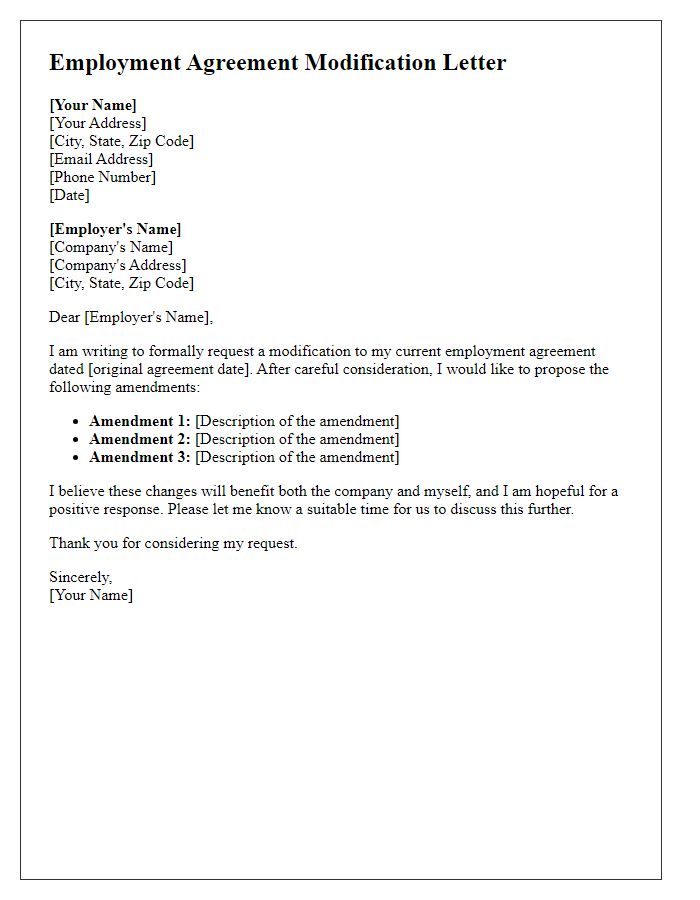
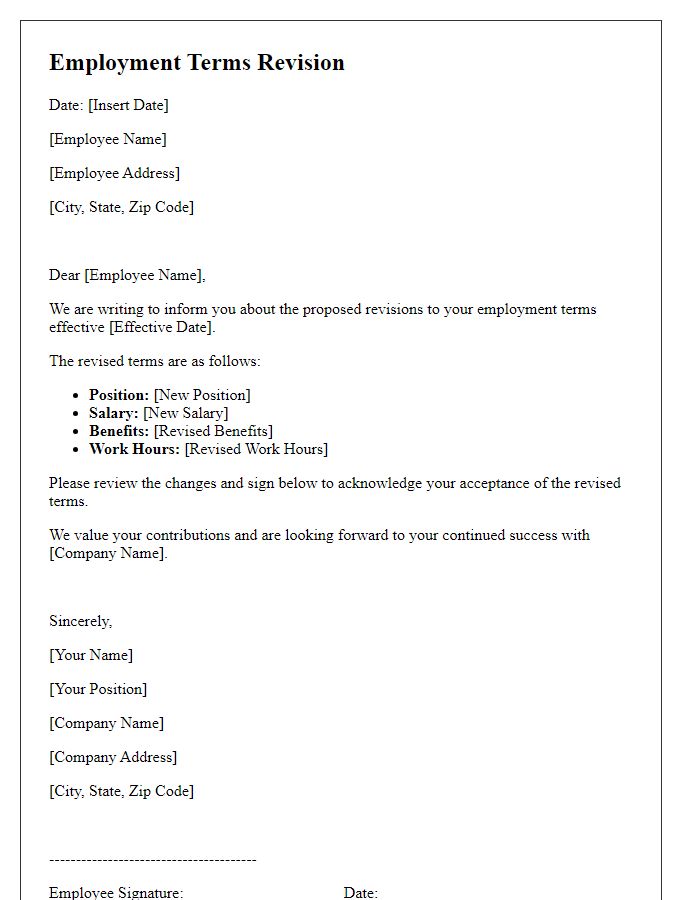
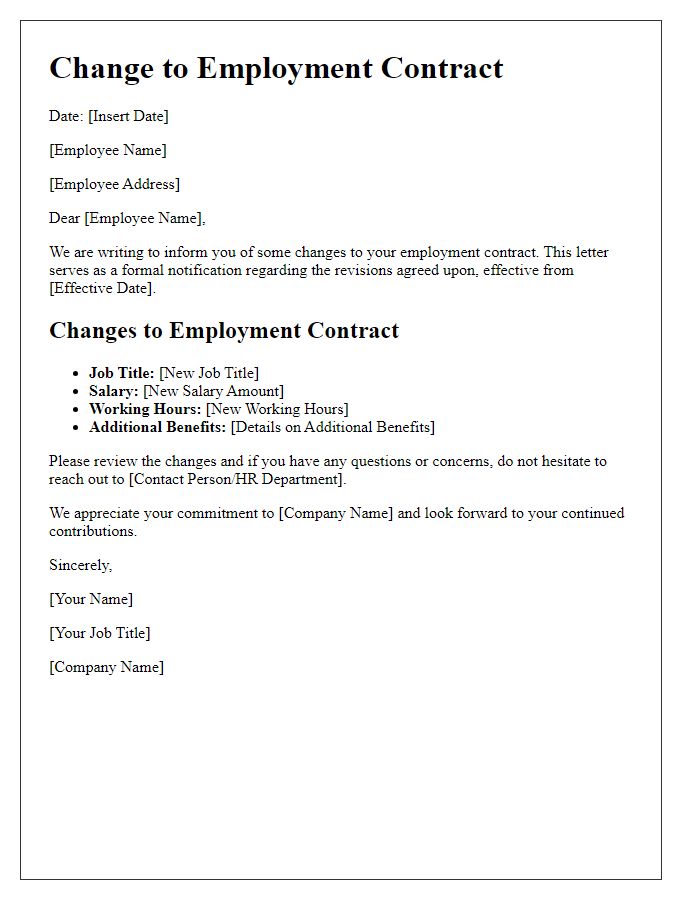
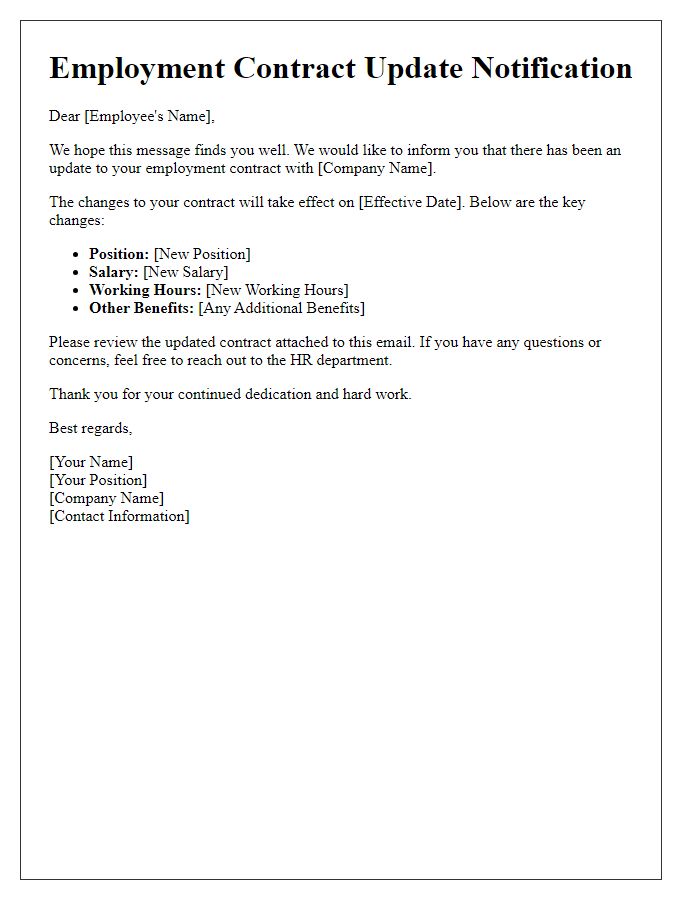
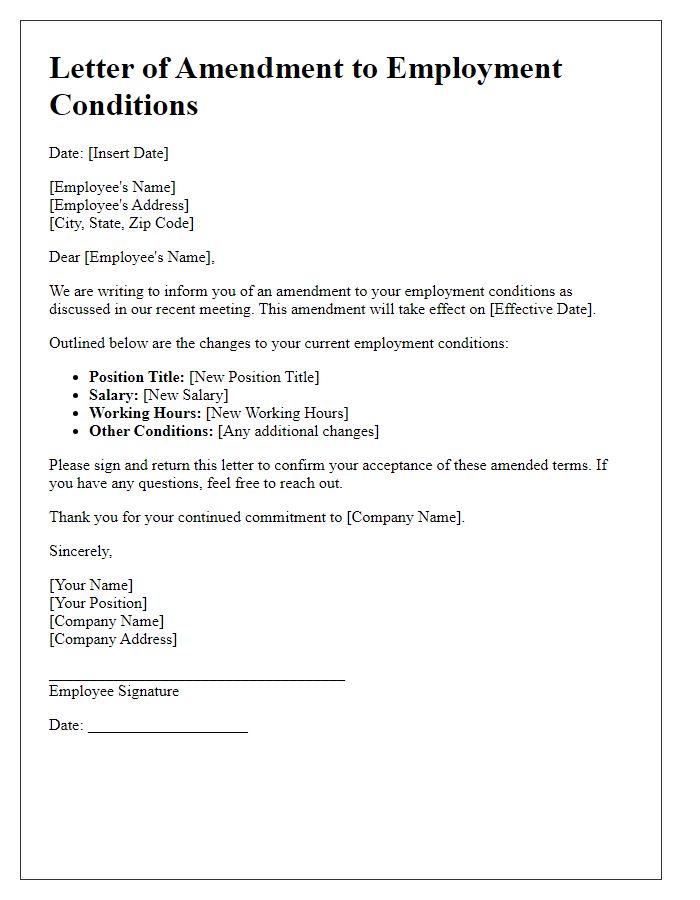
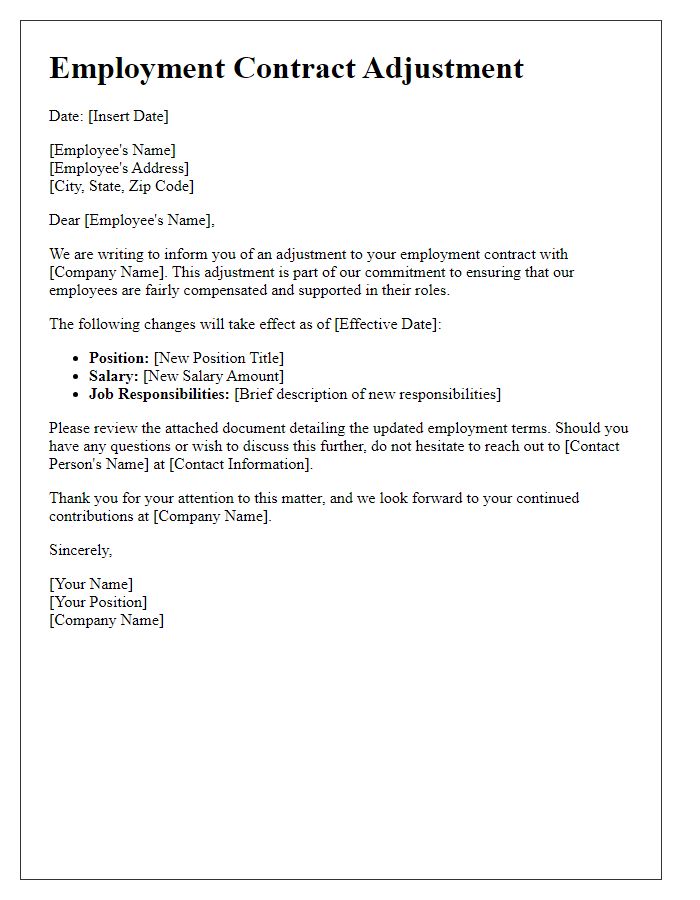
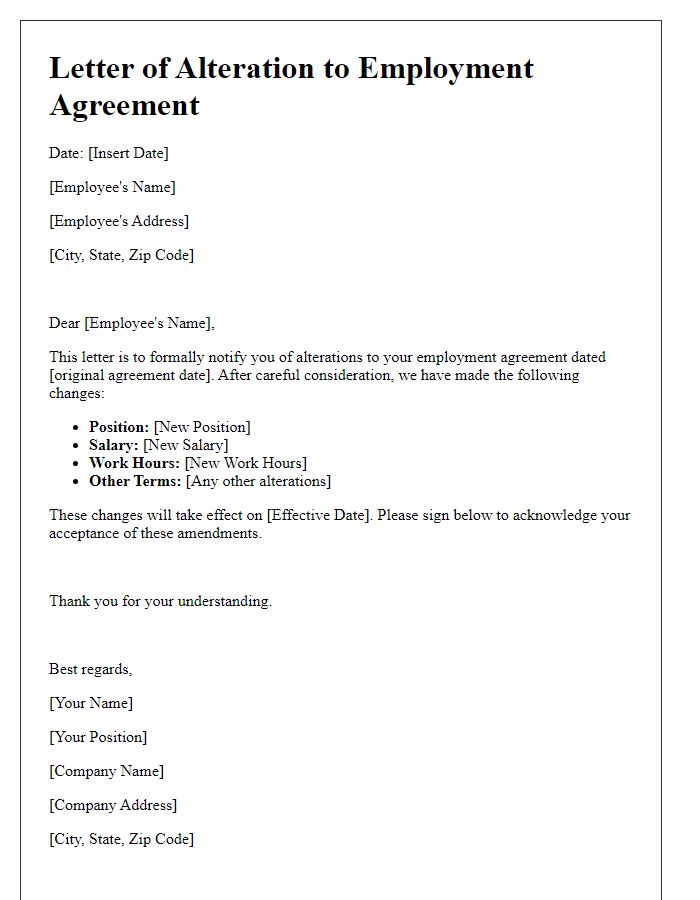
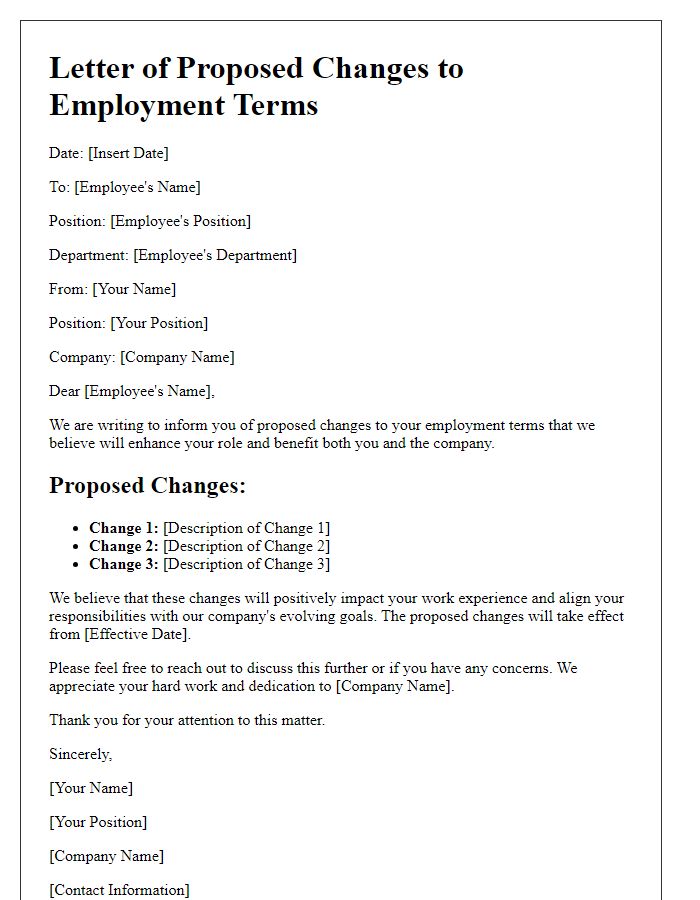
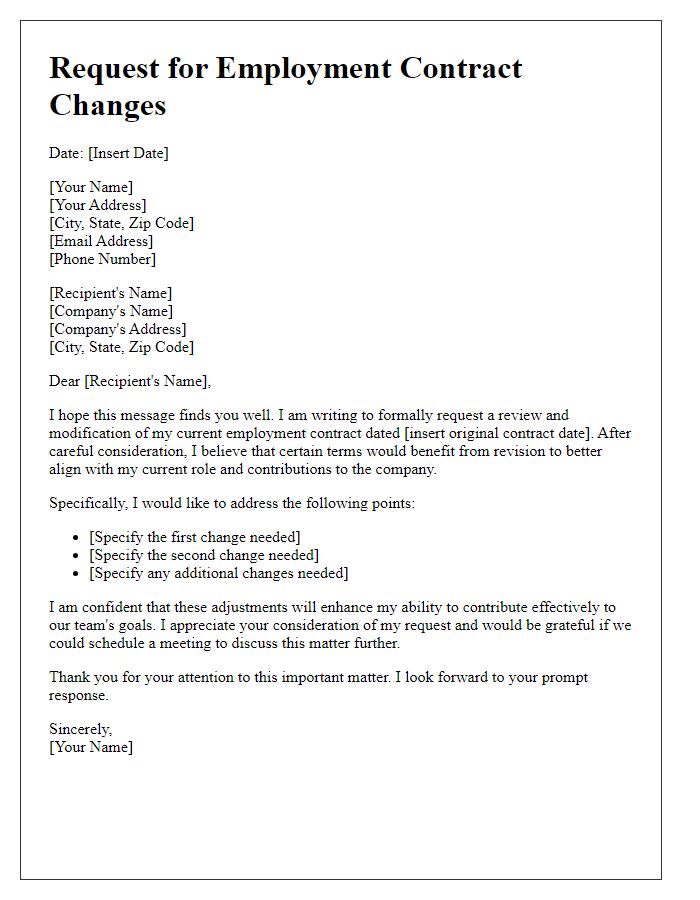


Comments